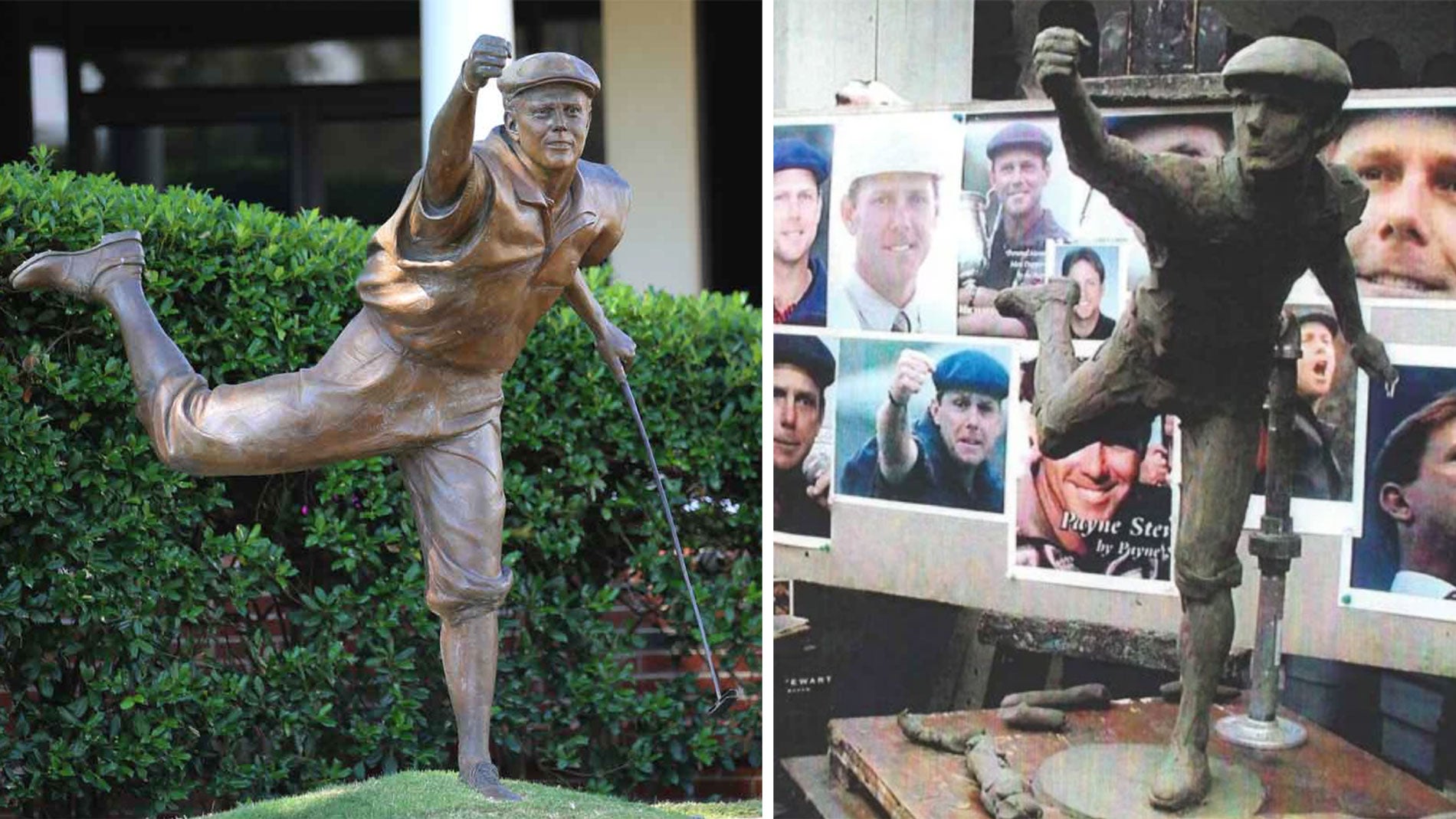PINEHURST, N.C. — Get ready, Pinehurst. We’re coming in. Millions of us, by train and plane and automobile, by laptop and cellphone and HDTV. The weekend of the 124th U.S. Open is upon us. Cantlay, Rory, Hideki, Bryson — plus young Ludvig Aberg from Sweden — all in the mix, for the game’s most important title, here at the home of American golf.
Get used to this Ludvig Aberg. He played in last year’s Ryder Cup. He finished second at this year’s Masters. He’ll be 29, and likely just hitting his stride, five years from now, when the U.S. Open returns here, to Pinehurst No. 2 for the 2029 U.S. Open.
Get used to this No. 2 course, a resort course that anybody can save up and play. (The off-season green fee is $360.) After the 2029 tournament, the men’s U.S. Open will be played here again at one of its three “anchor” sites in 2035, 2041 and (global warming permitting) 2047. The 2029 Women’s Open will be played here, too. The 2038 men’s U.S. Amateur will be played here. Also the 2027 and the 2044 women’s U.S. Amateurs. After you’ve burped Maya, you might tell her about the ’44 Am, so she can start preparing.
The USGA has moved its headquarters here, to Pinehurst, from preppy, horsey central New Jersey. The World Golf Hall of Fame has moved its museum here, from exit 323 on I-95, in the vicinity of a North Florida housing development.
The model is obvious. The R&A, which administers golf everywhere in the world except the United States and Mexico, has its home in St. Andrews, on the east coast of Scotland. The R&A World Golf Museum is in St. Andrews. The muni there, the Old Course, is the site of the British Open every five years. Every five years, Tiger Woods refers to St. Andrews as “the home of golf.” So charming, to hear him say that. I love hearing Fred Couples say that the Old Course is his favorite course in the world. With the exception of some Mexicans and Americans, the whole world knows that the British Open (the Open Championship) is golf’s greatest tournament. The winner is the Champion Golfer of the Year and all that. Yes, Brian Harman is the Champion Golfer of the Year. Tom Watson, who often uses she when referring to old-time golf courses, was the Champion Golfer of the Year five times, and the U.S. Open winner once, in 1982, at Pebble.
So, yes: the British Open will always be grand, the grandest, on a global scale. But for those of us, like Watson, who grew up on the USGA as the stern golfing father you needed in your life, the U.S. Open is the greatest of the four majors. No, Pinehurst is not the definitive home of American golf, though golf has been played here since 1895. But it’s in the conversation. The beauty of American golf is its stunning breadth, the endless variety present at Myrtle Beach and Bandon Dunes, the resort courses in greater Orlando and in greater Phoenix, the old-line private courses in New York and Philadelphia and Chicago, and Rochester and Cincinnati and Milwaukee. We’ve got it all.
The USGA is sending us a powerful message here, through this U.S. Open being played now. Every USGA course, from Pebble Beach in Northern California to Seminole in South Florida, has its own qualities, but tree-lined courses with choking rough, the type of courses that defined the U.S. Open play of Ben Hogan and Hale Irwin and Jack Nicklaus, are not coming back. Pinehurst No. 2 is what the USGA wants now and likely wants forever: wide, firm fairways where bombed drives will bounce and skip and maybe do crazy things and maybe not; large, sloping greens that are insanely fast; no-fluff steady-your-nerves greenside lies; rough that is hit-or-miss, imperfect, not uniform, unpredictable. Rough that mirrors life.
Yes, there’s a lot of Old Course in all of this. The Scot who designed Pinehurst No. 2, Donald Ross, did an apprenticeship under Old Tom Morris in St. Andrews in 1899. One-hundred years later, Ross was long dead but the 1999 U.S. Open here, won by Payne Stewart, would not have freaked him out. Payne’s knickers, of course, would have been familiar. But also his flowing, gorgeous swing, his joy and grit as he played through the rain, the grace he showed to the man he beat, young Phil Mickelson. Plus the course.
It was, amazingly, the first U.S. Open held at Pinehurst. The USGA had been eyeing it forever. Richard Tufts, grandson of the man who founded Pinehurst, was a president of the USGA and had a lifelong and close association with Ross. If you want to learn more about Ross, you might start with a book he wrote, “Golf Has Never Failed Me.” But the first Open here was not until ’99.
The iconic Payne Stewart statue at Pinehurst was a labor of loveBy: Jessica Marksbury
Rory McIlroy said the other day that he’s been reading and learning about course design and described his warm feelings for some of the recent U.S. Open courses. Pebble Beach in 2019, Torrey Pines in 2021, the Country Club in 2022, the Los Country Club last year and Pinehurst No. 2 this year are all pretty much variations on a theme. Winged Foot in September 2020, early in the pandemic, was sort of different.
“I think I really changed my [U.S. Open mindset] around in 2019, that one in Pebble, and since then I’ve started to enjoy this style of golf a lot more,” McIlroy said.
“It’s a lot different than the golf that we play week in, week out. I really appreciate that. I’ve started to appreciate golf course architecture more and more as the years have went on. I’ve started to read more about it and understand why golf course architects do certain things and design courses the way that they do. Just becoming more of a student of the game. I think because of that I’ve started to embrace golf courses like this and setups like this.”
OMG, how good is that?
In the 1980s, the guys on Tour used to say of Ben Crenshaw that he couldn’t play a course he didn’t like. Maybe Rory could lead a wee seminar on what that all means.
I made my first trip to Pinehurst in 1987. I played the No. 2 course on a rainy day in November when the course was empty, save for a few dozen golfing tourists from Japan, and by pure happenstance I was paired with a good golfer and a USGA rules guy named Kevin Dawson, who knew his way around a deck of cards like he knew his way around the rulebook.
When we got in from the round, we dried off in the clubhouse, Dawson handed me a legit deck of cards and told me to pick one at random and return it to the deck. He then asked me to get out a $1 bill and sign it. He wrapped the bill around the deck, then wrapped a rubber band around the bill. He took a thumb tack and placed it so its head faced the deck and its point was almost piercing the rubber band. He then threw the deck at a wooden pillar as hard as he could. Fifty-one cards fell to the floor. Pinned to the wooden pillar, by the thumbtack, was the rubber band, the signed $1 bill — and my original card.
Two golf bums. One magic trick.
The putt Payne Stewart made on Father’s Day in 1999 on 16, that was magical, too. I’m guessing it was 30 feet. The ball tracked, tracked, tracked, rode a ridge, fell in gently. Payne chewed his gum, finger-gunned the crowd, retrieved his ball. There were no hysterics. He was a shot behind Mickelson and tied with Woods, Vijay Singh was a shot behind them. I was right there. It was magical. You almost couldn’t breathe. Payne won by a shot. He was one under par. Just the way the USGA likes it. Payne was a beauty.
9 lessons from a hacker playing U.S. Open host Pinehurst No. 2By: James Colgan
I once spent parts of two days with Sam Snead. His feelings for Pinehurst No. 2 were intense. For years, he loved it. Then the course was changed, and he despised the changes and refused to come back. Courses are like golf swings: They can succeed or fail on the most minute things.
When the U.S. Open was here in 2005 (Michael Campbell won) and 2014 (Martin Kaymer), it didn’t feel anything like the course as it was in 1999. Maybe it was I who was different. Impossible to say. This course — Pinehurst No. 2, for the 2024 U.S. Open — brings to mind Pinehurst No. 2, 1999. At least it does for me. There will be millions of others here, one way or the other. You can all decide for yourself.
My prediction, and I’m bad at this, is that this should be good, this 124th U.S. Open, with all its nods to the motherland. You never know, of course, but it really should be good. Ludvig, with a v. McIlroy, looking for his fifth major title. Pinehurst. She’s the whole show, and that’s a natural fact.
Michael Bamberger welcomes your remarks at Michael.Bamberger@Golf.com












